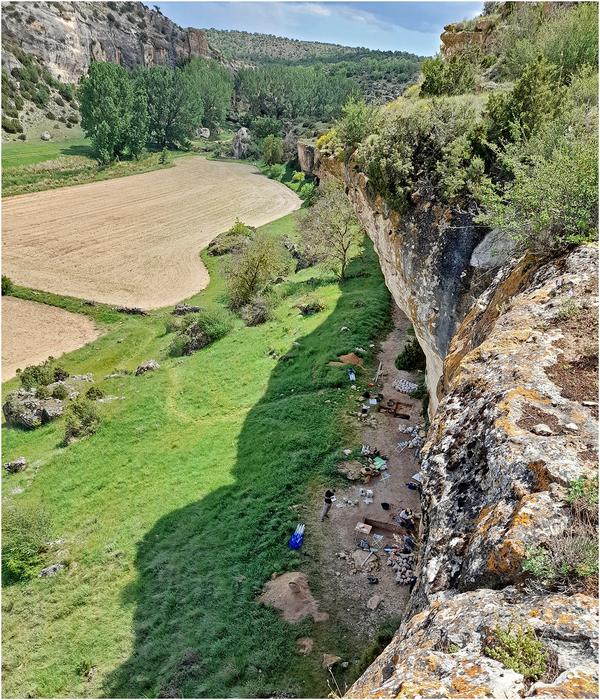 ALCALÁ DE HENARES, SPAIN—A new study has found that Paleolithic hunter-gatherers inhabited one of the harshest areas of Spain's interior during the last Ice Age, according to a statement released by the Public Library of Science. Previously, scholars have hypothesized that prehistoric populations would not have been able to endure the extremely cold and dry conditions of the inland regions of the Iberian Peninsula during the Last Glacial Maximum (LGM), which occurred between about 26,000 and 19,000 years ago. Researchers led by Manuel Alcaraz-Castaño of the University of Alcalá and Javier Aragoncillo-del Rió of Spain's Molina-Alto Tajo UNESCO Global Geopark, however, discovered tools and ornaments dating to two of the coldest periods of the LGM at Charco Verde II, a site located over 3,200 feet above sea level in Guadalajara province, one of the coldest regions of inland Spain. These artifacts indicate human occupation of the area between 21,000 and 15,000 years ago. Read the original scholarly article about this research in PLOS ONE. For more on how humans of the past adapted to extreme environments, go to "The Heights We Go To."
ALCALÁ DE HENARES, SPAIN—A new study has found that Paleolithic hunter-gatherers inhabited one of the harshest areas of Spain's interior during the last Ice Age, according to a statement released by the Public Library of Science. Previously, scholars have hypothesized that prehistoric populations would not have been able to endure the extremely cold and dry conditions of the inland regions of the Iberian Peninsula during the Last Glacial Maximum (LGM), which occurred between about 26,000 and 19,000 years ago. Researchers led by Manuel Alcaraz-Castaño of the University of Alcalá and Javier Aragoncillo-del Rió of Spain's Molina-Alto Tajo UNESCO Global Geopark, however, discovered tools and ornaments dating to two of the coldest periods of the LGM at Charco Verde II, a site located over 3,200 feet above sea level in Guadalajara province, one of the coldest regions of inland Spain. These artifacts indicate human occupation of the area between 21,000 and 15,000 years ago. Read the original scholarly article about this research in PLOS ONE. For more on how humans of the past adapted to extreme environments, go to "The Heights We Go To."
Study Finds Evidence of Inland Iberia’s Paleolithic Human Occupation
